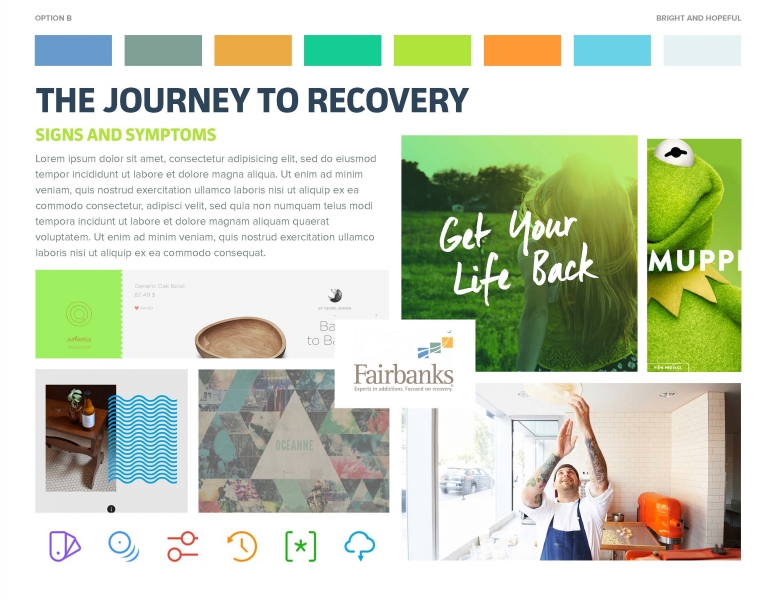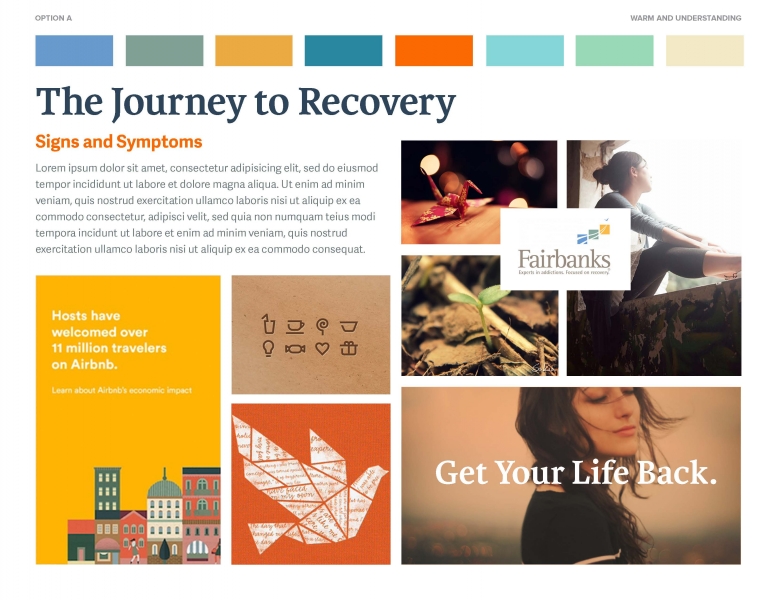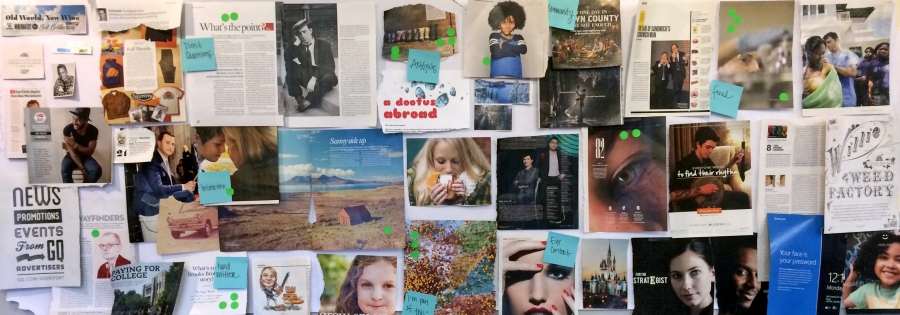Sometimes it’s tough to know where to begin when designing a website. When given the chance to create something completely new (or ‘refresh’ the look and feel of a site), it can seem like a daunting task. The opportunities are endless—from sorting through Pantone swatches in search of the perfect shade of red to sifting through hundreds of typefaces in pursuit of the most appropriate lowercase letter ‘g’. There’s so much potential in a blank Photoshop file. It’s exciting and overwhelming at the time.
This creative predicament doesn’t just apply to websites; it may apply to brands, print materials, wedding planning, parties, and even remodeling bathrooms. With so many choices, where does one begin?
Two words, folks (or one word, depending on who you ask): mood boards.
What is a mood board?
Mood boards are used in a variety of disciplines to evoke the overall design direction and tone of a project. Mood boards aren’t actually ‘boards’ per se, but rather a compilation of the various elements that may contribute to a project. For example, a website mood board may include color swatches, typefaces, photographs, illustrations, icons, and patterns that will inspire a new site.


Mood boards are used to provide creative direction to a project—they’re broad on purpose. They serve as a palette for designers to pull, mix, and mold the pieces together as she begins to apply the element tones to the actual project.
Why should I use a mood board?
Mood boards are extremely useful as a team tool, allowing all members to contribute to the compilation and discuss its specific elements using a common language. For example, when brainstorming photography for a new site, one person’s definition of ‘clean’ might be vastly different from another person’s definition of ‘clean’. Discussions around the tone of specific elements in a mood board help designers determine what exactly is most appropriate for a project.
Exploring mood boards as a team also creates a safe space to explore. Ultimately, there are no surprises. Rather, all participants get to have a part in shaping the visual direction of a project. Everyone is invested.
Why mood board? They’re iterative. And fast. Two things that benefit everyone involved.
How do I create a mood board?
Mood boarding comes in many formats. To begin any mood boarding exercise, however, it is important to consider the words and questions involved in articulating the tone of the new project. What values do we want to exhibit? How do we want people to feel when they see this work? How do we move them?
After some discussion and reflection, it is important to then collect as many elements as possible that are thought to evoke the desired tone. Diverge before converging. Explore a variety of compilations before deciding on one direction. Once this direction is found, it is then important to document it clearly.

Analog documentation may involve the collection of specific elements torn from magazines pages and other print pieces. Elements such as photographs and typefaces may be placed alongside color swatches and textures and tacked on an actual board. Digital mood boards may be a curation of images found across the web and placed within a flat, printed document.
Once things are documented and approved, it’s time to move into design!
To sum things up, mood boards are a wonderful tool for providing the creative direction of a project by compiling the specific elements that make up its palette. And furthermore, mood boards come in many formats—from collages, to gridded .PSD files, to Pinterest boards.
Yes, that’s right: Pinterest boards.
What have your experiences been with mood boarding? Have you done it before without even realizing (say, when pinning ideas on your bathroom remodel)?
